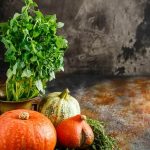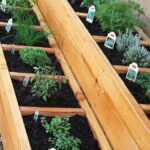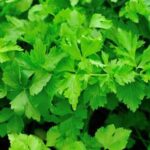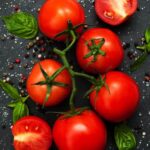Are you wondering what vegetables do best in container gardens? Container gardening is a versatile and efficient way to grow vegetables, especially in limited spaces. This method allows people with small yards, balconies, or patios to experience the joy of growing their own food. In this article, we will explore the benefits of container gardening and how it enables individuals to cultivate a variety of vegetables regardless of space constraints.
Container gardening offers numerous advantages for those who want to grow their own vegetables. It provides the opportunity for people living in urban areas or with limited outdoor space to engage in gardening. The use of containers also allows for better control over soil quality and drainage, making it easier to create an optimal growing environment for plants.
One important aspect of successful container gardening is choosing the right containers. Different types of containers are suitable for growing vegetables, and selecting the appropriate one can make a significant difference in the plants’ growth and productivity.
Additionally, knowing how to select containers that suit specific vegetable varieties is crucial for their development and overall health. In this article, we will discuss the various types of containers suitable for growing vegetables and provide guidance on choosing the right one for your needs.
Choosing the Right Containers
When it comes to growing vegetables in container gardens, choosing the right containers is crucial for the success of your crops. Different types of containers are suitable for growing vegetables, and it’s important to select the right one based on the specific needs of the plants you intend to grow. Here are some types of containers that work well for vegetable gardening:
- Terra Cotta Pots: These are a classic choice for container gardening and are great for vegetables that prefer well-draining soil.
- Grow Bags: These are lightweight and versatile, making them ideal for small spaces and areas with limited sunlight.
- Raised Beds: Perfect for larger vegetables or multiple plants, raised beds provide ample space for root development.
- Hanging Baskets: Ideal for trailing or vining vegetables such as cherry tomatoes or peppers, hanging baskets save space and add visual interest to your garden.
When selecting the right container for your vegetable garden, consider factors such as size, material, and drainage. The size of the container should be appropriate for the mature size of the vegetable plant, allowing enough space for root growth. Additionally, ensure that the container has adequate drainage holes to prevent waterlogging, which can lead to root rot.
It’s also essential to consider the material of the container. Plastic or resin containers are lightweight and easy to move around, while clay or ceramic pots may require less frequent watering due to their porous nature. Finally, consider the aesthetic appeal of the containers and how they will fit into your overall garden design. By carefully choosing the right containers for your vegetable garden, you can set yourself up for a successful growing season.
Soil Selection
When it comes to container gardening, the soil selection is crucial for the success of growing vegetables in limited spaces. The right soil mix provides essential nutrients and proper drainage for the vegetables to thrive. Good quality soil is especially important in container gardening since the plants rely solely on the nutrients present in the soil within the container.
Importance of Good Quality Soil
In container gardening, vegetables are unable to search for nutrients beyond the confines of their pots. Therefore, it is vital to use a high-quality potting mix that is well-draining and nutrient-rich. This will ensure that the vegetables have access to all the necessary elements for healthy growth and development. Additionally, good quality soil promotes good root development, which is crucial for obtaining a bountiful harvest from container-grown vegetables.
Tips on Best Soil Mix for Vegetables
When selecting a soil mix for growing vegetables in containers, it is essential to choose a blend specifically formulated for this purpose. Look for potting mixes labeled for vegetables or one specially designed for containers. These mixes typically contain a combination of materials such as peat moss, perlite, vermiculite, and compost to provide an optimal environment for vegetable growth.
It is important to avoid using garden soil or heavy topsoil in containers, as they can cause drainage issues and may not provide the necessary nutrients for healthy vegetable plants. Adding organic matter such as compost can further improve the quality of the soil mix and contribute to better overall plant health and productivity.
Best Vegetables for Container Gardens
When it comes to choosing the best vegetables for container gardens, there are several options that thrive in this environment and provide a bountiful harvest. Not all vegetables are suitable for container gardening, but there are many that do exceptionally well. Some of the best vegetables for container gardens include tomatoes, peppers, lettuce, spinach, and herbs such as basil, parsley, and chives.
Tomatoes
Tomatoes are one of the most popular vegetables for container gardening. They require a large pot with good drainage and need plenty of sunlight to thrive. Determinate varieties are particularly well-suited for containers because they have a more compact growth habit.
Peppers
Peppers also do well in containers, especially bell peppers and chili peppers. They require a deep pot to accommodate their root system and prefer warm temperatures and full sunlight. Regular watering is essential to keep the soil consistently moist.
Lettuce and Spinach
Leafy greens like lettuce and spinach are ideal for container gardens due to their shallow root systems. They can be grown in wide, shallow containers and thrive in partially shaded areas or cool climates. These vegetables require regular watering to keep the soil evenly moist.
In addition to these specific vegetable recommendations, it’s important to consider the size of the container, proper spacing between plants, and providing adequate support or trellising for vining plants such as tomatoes. By choosing the right vegetables and following their specific growing requirements, you can create a thriving container garden that yields an abundant harvest.
Maintenance Tips
When it comes to maintaining a successful container garden, proper watering, fertilizing, and pest control are essential for the health and growth of vegetables. Here are some tips to ensure the best care for your vegetables grown in containers:
- Watering: Proper watering is crucial for vegetables grown in containers. It’s important to regularly check the moisture level of the soil to avoid overwatering or underwatering. The frequency of watering will depend on the type of vegetable, the size of the container, and environmental factors such as temperature and humidity.
- Fertilizing: Container-grown vegetables require regular fertilization since nutrients in the soil can get depleted more quickly compared to traditional garden beds. Using a balanced, slow-release fertilizer or organic compost can help provide essential nutrients for healthy plant growth. Be mindful of following the specific instructions on the fertilizer packaging.
- Pest Control: Pests can pose a threat to container-grown vegetables, so it’s important to monitor for any signs of infestation. Inspect the plants regularly for common pests such as aphids, caterpillars, or mites. Consider using natural pest control methods like insecticidal soap or neem oil to deter pests without harming your vegetables.
By following these maintenance tips, you can ensure that your container garden thrives and produces an abundant harvest of fresh, healthy vegetables.
Sunlight and Location
Best Vegetables for Container Gardens:
When it comes to choosing the right vegetables for your container garden, there are several options that thrive in this environment. Some of the best vegetables for container gardens include tomatoes, peppers, lettuce, spinach, kale, radishes, green onions, and herbs such as basil, parsley, and mint. These vegetables are well-suited for growing in containers due to their compact size and shallow root systems.
It’s important to consider the specific requirements of each vegetable when deciding on a location for your container garden. For example, plants like tomatoes and peppers require full sunlight and should be placed in an area where they can receive at least 6-8 hours of direct sunlight per day. On the other hand, leafy greens like lettuce and spinach can tolerate partial shade and may do better in a location with dappled sunlight or morning sun.
In addition to considering sunlight requirements, it’s also important to think about access to water and protection from strong winds. Placing your containers near a water source will make it easier to keep your vegetables hydrated, while sheltering them from strong winds will help prevent damage to the plants. By carefully selecting the right location based on the needs of your chosen vegetables, you can set yourself up for a successful container garden harvest.
| Vegetable | Light Requirements |
|---|---|
| Tomatoes | 6-8 hours of direct sunlight |
| Lettuce | Partial shade or dappled sunlight |
| Basil | Full sunlight or partial shade |
Harvesting and Succession Planting
When it comes to harvesting vegetables grown in containers, timing is crucial. The best way to determine if a vegetable is ready to be harvested is by familiarizing yourself with its specific growing requirements and maturity indicators. For example, tomatoes should be plump and firm with vibrant color, while lettuce can be harvested once the leaves reach your desired size. Proper harvesting not only ensures the best flavor and texture but also encourages continuous growth and production.
Succession planting is a popular technique used in container gardening to ensure a steady supply of fresh vegetables throughout the growing season. This method involves planting new seeds or seedlings as soon as the previous crop has been harvested.
This allows for a seamless transition between crops, avoiding gaps in production and maximizing the use of available space. It’s important to keep track of plant maturity cycles and plan ahead so that there are always new plants ready to replace those that have been harvested.
As an example, lettuce can be succession planted every 2-3 weeks, providing a consistent supply of fresh leaves for salads or sandwiches. By staggering plantings, you can ensure a continuous harvest without experiencing an overabundance of any one crop at a particular time. Additionally, succession planting also helps prevent soil depletion by rotating different types of vegetables throughout the growing season.
| Vegetable | Succession Planting Cycle |
|---|---|
| Lettuce | Every 2-3 weeks |
| Radishes | Every 2-3 weeks |
| Beans | Every 3-4 weeks |
Examples of Successful Container Gardens
In conclusion, container gardening offers a versatile and convenient way to grow vegetables in limited spaces. By carefully choosing the right containers and soil mix, along with selecting the best vegetables for container gardens, individuals can enjoy a bountiful harvest right on their patio or balcony. Additionally, proper maintenance such as watering, fertilizing, and pest control are essential for the health and productivity of vegetables grown in containers.
As emphasized throughout this article, sunlight and location play a crucial role in the success of container gardens. By understanding the specific sunlight requirements of various vegetables and finding the ideal location for each type of plant, gardeners can ensure optimal growth and productivity. Furthermore, learning about succession planting allows for continuous harvesting by replacing mature plants with new ones, ensuring a steady supply of fresh vegetables throughout the growing season.
For inspiration and guidance, real-life examples of successful container gardens have been showcased, highlighting the diverse range of vegetables that can thrive in containers. These examples serve as a testament to the potential of container gardening and offer valuable insights into best practices for growing vegetables in this manner. Overall, with the right knowledge and care, anyone can achieve success with their own container garden and enjoy the rewards of homegrown produce.
Frequently Asked Questions
What Are the Best Vegetables for Container Gardening?
The best vegetables for container gardening are those that don’t require a large amount of space to grow, such as tomatoes, peppers, lettuce, spinach, radishes, and green onions. These types of vegetables can thrive in the confined environment of a container and are well-suited for urban or small-space gardening.
What Is Most Important in Container Gardening?
The most important aspect of container gardening is ensuring that your plants have adequate drainage. This means choosing pots with drainage holes at the bottom and using a good quality potting mix that allows water to flow through easily. Without proper drainage, plants can become waterlogged and develop root rot, ultimately leading to their demise.
What Is the Best Plant Food for Vegetables in Pots?
When it comes to plant food for vegetables in pots, it’s essential to use a balanced fertilizer specifically formulated for vegetables. Look for a fertilizer with an N-P-K ratio that’s suitable for growing veggies (e.g., 10-10-10 or 8-8-8) and follow the package instructions for how often and how much to apply.
Additionally, organic options like compost or worm castings can also provide valuable nutrients to your container garden without the risk of over-fertilization.

If you’re looking to get into vegetable gardening, or are just looking for some tips on how to make your current garden better, then you’ve come to the right place! My name is Ethel and I have been gardening for years. In this blog, I’m going to share with you some of my best tips on how to create a successful vegetable garden.





